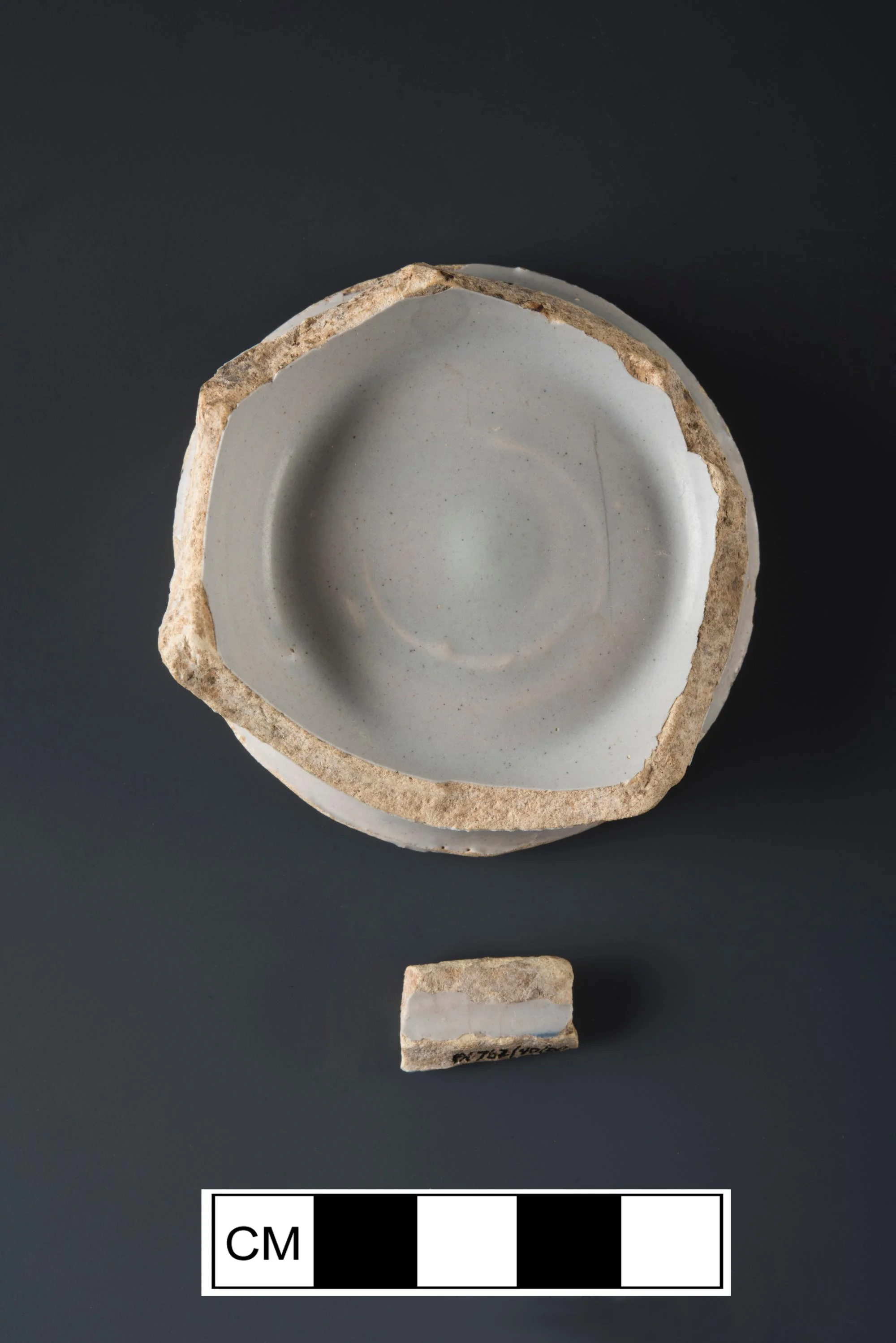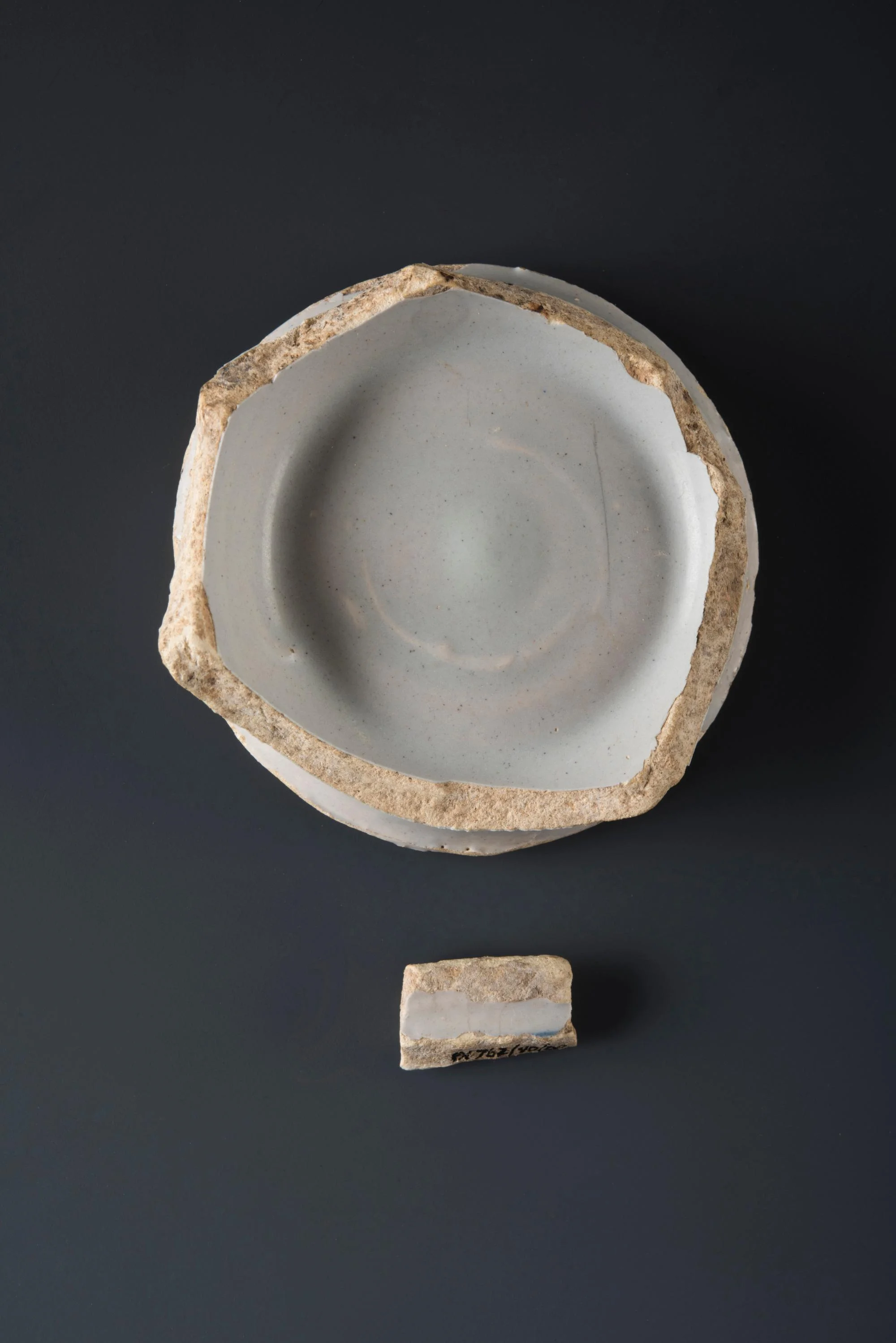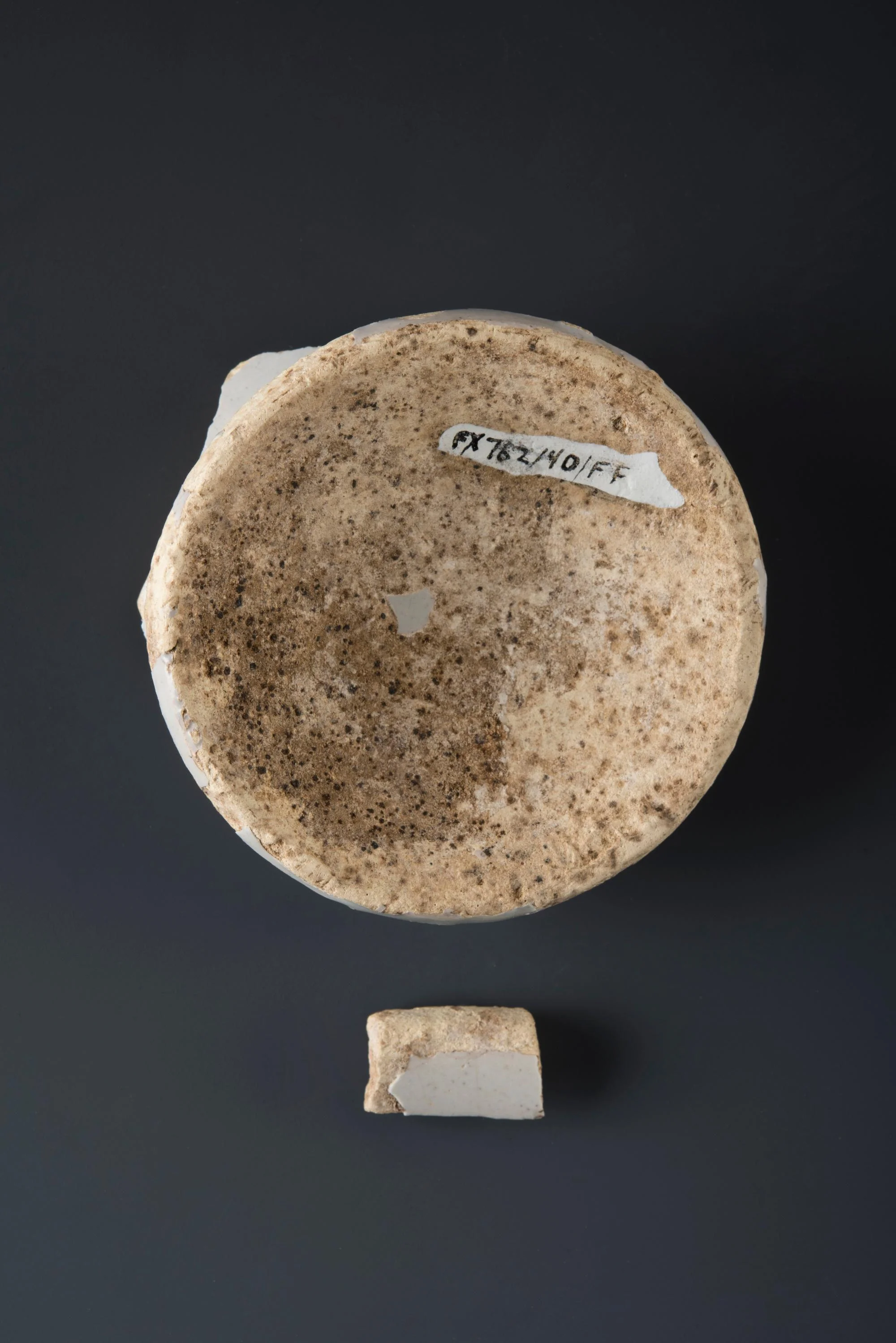Notes
This is a fragment from the base of a tin-glazed earthenware drug jar. This ware is often referred to by archaeologists as delftware. The white coloration of the glaze was obtained by adding tin-oxide to a lead glaze. Against this white field, delft was most often decorated with hand painted cobalt blues. These wares mimicked more expensive Chinese export porcelain in both the white color of the glaze and the use of hand painted blue decoration. Ceramics such as these were produced in numerous locations in both Britain and Holland beginning in the seventeenth-century, though production continued through the end of the following century. While the tableware and teaware forms of this ceramic diminished in popularity through the eighteenth century, delftware continued to be a popular for more utilitarian forms.
Drug jars, as the name suggest, often held medicines in the form of powders and pills or ingredients for home remedies. Invoices clearly show Washington ordered both pills and Apocathary supplies from his London merchants, as well as, contracted locally with physicians to attend household members, both free and enslaved, during periods of illness. The residents of the Mansion Farm, living in and near the House for Families, may also have possessed of a variety of herbal and traditional medicinal knowledge as well.
Measurements taken from both sherds accordingly.
Object Type
Has it Been Conserved?
No
Where Was It Found?
Project Site: House for Families [more details]
Material
Vessel
Manufacturing Technology
Form
Completeness
Date
1600-1775
Country of Origin
Dimensions
60mm x 25mm x 65mm (W x H x L)
Illustration shows object in comparison to the size of a quarter
Weight
40.9 gram(s)
Object Number
1722797. TG. V.11
DAACS Number
1722797
Project: House for Families
The structure identified as the “House for Families” on the 1787 Vaughan plan likely housed the majority of the enslaved population living at the Mansion House Farm for much of the second half of the eighteenth century. The building was in existence from circa 1760 until it was demolished in late 1792 or early 1793. The archaeological evidence for the structure consisted of a brick-lined storage cellar (44FX762/40-47) measuring roughly six feet by six feet. Historically the cellar served as a handy trash receptacle once it ceased to be used for its original storage function, and through extensive excavation has yielded an extremely rich assemblage of household refuse. The analysis of these remains offers the opportunity to study important aspects of the daily lives of Mount Vernon's enslaved community.
See All Objects From this Dig



 Ceramic
Ceramic